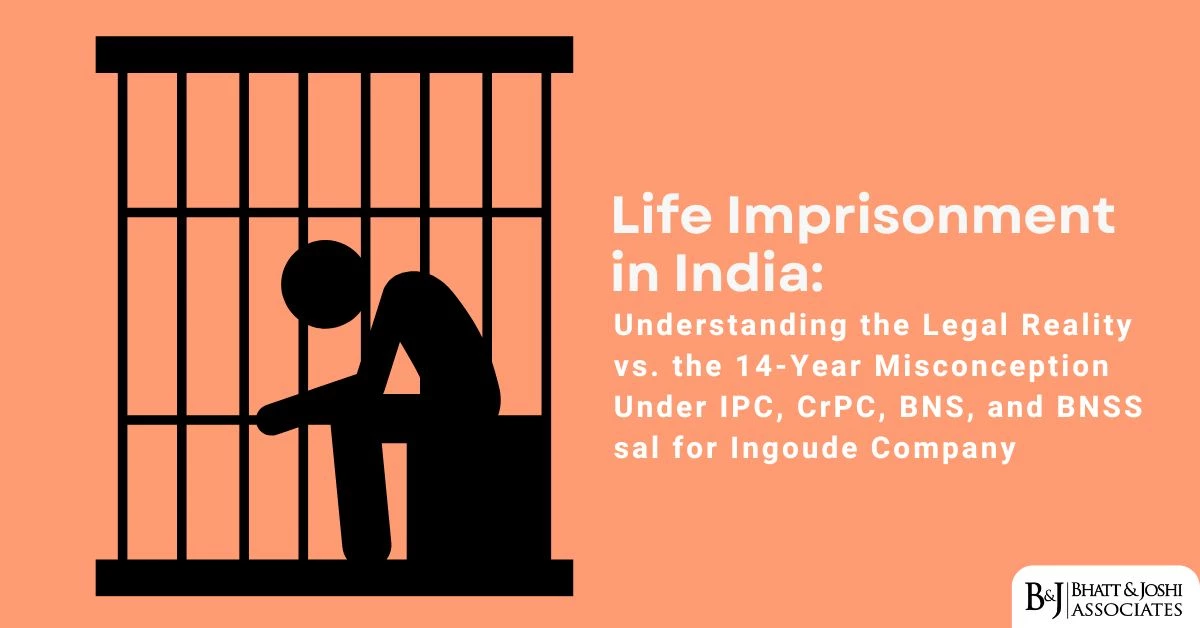Executive Summary
The Supreme Court of India has once again reiterated the fundamental distinction between an agreement to sell and a deed of conveyance, emphasizing that agreements to sell, without specific performance suits, cannot confer any transferable interest or ownership rights in immovable property. In a recent judgment delivered by Justices JB Pardiwala and R Mahadevan, the apex court reaffirmed that “in the absence of a suit for specific performance, the agreement to sell cannot be relied upon to claim ownership or to assert any transferable interest in the property” [1].
This landmark decision reinforces the statutory framework established under the Transfer of Property Act, 1882, particularly Sections 54 and 55, which mandate registered conveyance deeds for valid transfer of immovable property ownership. The Supreme Court on Agreement to Sell has categorically stated that unregistered agreements, even when coupled with possession, do not convey title or create any legal interest in immovable property. This reinforces the importance of proper documentation, protects the integrity of property registration systems, and helps prevent fraudulent claims based on inadequate records.
The ruling has significant implications for property law practice in India, particularly in addressing the widespread misuse of unregistered agreements to sell and general power of attorney transactions that have proliferated to circumvent statutory requirements. This comprehensive analysis examines the legal principles, statutory framework, and practical implications of this fundamental aspect of Indian property law.

Legal Framework Under the Transfer of Property Act, 1882
Section 54: Definition and Requirements of Sale
Section 54 of the Transfer of Property Act, 1882 provides the foundational definition of ‘sale’ as “a transfer of ownership in exchange for a price paid or promised or part-paid and part-promised.” This definition encapsulates the essential elements that distinguish a completed sale from a mere agreement to sell [3]. The section mandates that for tangible immovable property valued at one hundred rupees and upwards, transfer can only be effectuated through a registered instrument, ensuring legal certainty and public notice of ownership changes.
The statutory requirement for registration serves multiple critical functions in property law: it provides conclusive evidence of ownership transfer, it protects subsequent purchasers and creditors from competing claims, it maintains comprehensive public records of property ownership, and it prevents fraudulent transactions through documentary verification. The mandatory nature of these requirements ensures that property rights are clearly established and legally enforceable.
The distinction between ‘sale’ and ‘agreement to sell’ is fundamental to understanding property transfer mechanisms. While a sale involves immediate transfer of ownership upon execution of a registered deed, an agreement to sell merely creates a contractual obligation to transfer ownership at a future date upon fulfillment of specified conditions. This temporal and legal distinction has profound implications for the rights and remedies available to parties in property transactions.
Section 55: Rights and Obligations of Parties
Section 55 of the Transfer of Property Act complements Section 54 by outlining the specific rights, duties, and liabilities of buyers and sellers in property transactions. This provision establishes the framework for fair dealing and prevents fraudulent practices by clearly delineating party obligations throughout the transfer process [4]. The section applies “in the absence of a contract to the contrary,” providing default rules that ensure equitable treatment when parties have not specified alternative arrangements.
The seller’s obligations under Section 55 include disclosing title defects, delivering possession upon payment, executing proper conveyance documents, maintaining property until delivery, paying public charges and encumbrances, and providing clear and marketable title. These obligations ensure that buyers receive exactly what they bargained for without hidden liabilities or title defects.
Conversely, buyers must investigate title before completion, pay the agreed purchase price, accept conforming delivery, bear risk of loss after completion, and complete the transaction within stipulated timeframes. This balanced allocation of risks and responsibilities promotes certainty in property transactions while protecting both parties’ legitimate interests.
Statutory Distinction: Sale vs. Agreement to Sell
Immediate vs. Future Transfer of Ownership
The fundamental distinction between a sale and an agreement to sell lies in the timing of ownership transfer. In a completed sale under Section 54, ownership transfers immediately upon execution of the registered conveyance deed, regardless of whether full payment has been made. The buyer becomes the legal owner with all attendant rights and responsibilities from the moment of registration [5].
Conversely, an agreement to sell creates only a contractual right to demand specific performance or seek damages for breach. No ownership interest passes to the prospective buyer until a formal conveyance deed is executed and registered. This distinction is crucial because it determines the nature of rights that can be enforced against third parties and the remedies available in case of disputes.
The immediate transfer characteristic of sales provides greater security to buyers, as they acquire indefeasible title subject only to registered encumbrances. Agreement holders, however, remain vulnerable to the seller’s subsequent dealings with the property, including sale to third parties or creation of new encumbrances, unless they can successfully seek specific performance.
Legal Consequences and Remedies
The different legal characterizations of sales and agreements to sell result in fundamentally different remedies and enforcement mechanisms. Buyers under completed sales can assert ownership rights against the entire world, seek possession through summary procedures, create or transfer interests to third parties, and obtain protection against adverse claims through the doctrine of indefeasibility of registered title.
Agreement holders, by contrast, possess only personal contractual rights against the seller. Their primary remedies include suits for specific performance to compel completion of the sale, damages for breach of contract if specific performance is unavailable, injunctions to prevent dealing with third parties, and defensive protection under Section 53A of the Transfer of Property Act if they have taken possession and performed their contractual obligations.
This fundamental difference in available remedies explains why the Supreme Court consistently emphasizes that agreements to sell cannot substitute for proper conveyance procedures. The law deliberately structures these different remedy systems to encourage completion of formal transfer procedures while protecting parties’ legitimate contractual expectations.
The Registration Imperative
Statutory Requirements Under the Registration Act, 1908
The Registration Act, 1908 establishes the mandatory framework for documenting property transfers through registered instruments. Section 17 of the Act specifically requires registration of documents affecting immovable property valued above prescribed thresholds, while Section 49 renders unregistered documents inadmissible as evidence of title [6]. These provisions work in tandem with the Transfer of Property Act to create a comprehensive system for property transfer documentation.
The registration requirement serves several critical public policy objectives. It provides constructive notice to the world of ownership changes, maintains comprehensive public records for title verification, prevents forgery and fraudulent documentation, establishes priority systems for competing claims, and facilitates efficient property markets through reliable title information.
Failure to comply with registration requirements results in severe legal consequences. Unregistered transfer documents cannot be used to prove title in legal proceedings, create no legal interest in favor of intended transferees, provide no protection against subsequent registered transferees, and render transactions vulnerable to challenge by the transferor or third parties claiming under them.
Protection of Third-Party Rights
The registration system protects innocent third parties who rely on public records when dealing with property. Subsequent purchasers for value without notice of unregistered agreements acquire superior title to agreement holders, even if the agreement predates their transaction [7]. This rule encourages reliance on official records while discouraging informal property dealings that could deceive future purchasers.
The doctrine of constructive notice, fundamental to the registration system, presumes that all persons have knowledge of properly registered documents affecting property. This presumption enables third parties to rely confidently on registered title documents without investigating potential unregistered claims, thereby facilitating efficient property markets and reducing transaction costs.
Conversely, the law provides no protection to parties who deal with property based solely on unregistered agreements or informal arrangements. Such parties assume the risk that their interests may be defeated by subsequent registered transactions, encouraging compliance with formal transfer procedures.
Supreme Court Jurisprudence: The Suraj Lamp Doctrine
Evolution of Anti-Avoidance Jurisprudence
The Supreme Court’s landmark decision in Suraj Lamp & Industries (P) Ltd. v. State of Haryana (2012) 1 SCC 656 represents a watershed moment in Indian property law jurisprudence. The Court comprehensively addressed the proliferation of informal property transfer mechanisms designed to circumvent statutory requirements, including sale agreements coupled with general power of attorney and will transfers (SA/GPA/Will transactions) [8].
The Suraj Lamp decision identified several pernicious effects of informal transfer mechanisms: avoidance of stamp duty and registration charges, circumvention of regulatory restrictions on property transfers, facilitation of black money investment in real estate, evasion of capital gains taxation on property transfers, and undermining of land revenue records and planning regulations.
The Court’s analysis revealed how these informal mechanisms had evolved specifically to exploit loopholes in the legal framework while avoiding the transparency and accountability that formal registration requirements were designed to ensure. The decision represents judicial recognition that technical compliance with individual statutory provisions cannot substitute for adherence to the overall statutory scheme for property transfers.
Comprehensive Prohibition of Informal Transfers
The supreme court on agreement to sell, in its landmark Suraj Lamp & Industries (P) Ltd. v. State of Haryana decision, clarified that such agreements—by themselves—do not create any ownership interest in immovable property. The judgment established several enduring principles of property law: first, a power of attorney cannot transfer ownership, as it only establishes an agency relationship; second, an agreement to sell is merely a contractual obligation, not a conveyance of title; and third, mere possession, without a registered title deed, provides no legal protection against rightful owners or registered purchasers [9].
The Court emphasized that these principles apply regardless of the commercial arrangements parties may devise to simulate property sales. Combinations of sale agreements, power of attorney documents, and wills cannot collectively achieve what none can accomplish individually – the transfer of legal ownership in immovable property without proper registration.
This comprehensive prohibition extends to all variations of informal transfer mechanisms, including those involving partial payments, possession transfers, and irrevocable power of attorney arrangements. The Court’s analysis demonstrates that form cannot be elevated over substance when fundamental statutory requirements are at stake.
Contemporary Application and Refinement
Recent Supreme Court decisions have consistently reaffirmed and refined the Suraj Lamp principles. In The Cosmos Co-operative Bank Ltd. v. Central Bank of India & Ors. (2025) and M.S. Ananthamurthy v. J. Manjula (2025), the Court has reiterated that unregistered agreements to sell cannot create or transfer any right, title, or interest in immovable property [10].
These contemporary decisions demonstrate the Court’s continued commitment to enforcing formal transfer requirements while adapting the legal framework to address evolving attempts to circumvent statutory protections. The consistent judicial approach reflects recognition that property law certainty depends on adherence to established procedural requirements rather than acceptance of creative informal arrangements.
Section 53A: Limited Protection for Agreement Holders
Doctrine of Part Performance
While unregistered agreements to sell cannot confer ownership rights, the supreme court on agreement to sell has clarified that limited protection is available under Section 53A of the Transfer of Property Act, which embodies the doctrine of part performance. This provision safeguards transferees who have taken possession of property and fulfilled their contractual obligations, even when formal transfer procedures remain incomplete [11].
Section 53A requires several essential elements for its application: a written contract for property transfer, transfer for consideration (not gratuitous), actual possession by the transferee pursuant to the contract, performance or willingness to perform by the transferee, and the existence of an incomplete transfer due to procedural deficiencies rather than substantive contract failures.
The protection offered by Section 53A is defensive rather than affirmative. Agreement holders cannot use this provision to establish title or claim ownership, but they can resist dispossession by transferors or persons claiming under them. This limited protection encourages contract performance while maintaining the distinction between contractual rights and property ownership.
Scope and Limitations of Protection
The Supreme Court’s jurisprudence on agreement to sell has consistently held that Section 53A serves only as a shield—not a sword. It does not create ownership rights and has no effect against subsequent bona fide purchasers for value without notice [12].
The defensive nature of Section 53A protection means that agreement holders remain vulnerable to several risks: subsequent sales to bona fide purchasers, creation of encumbrances by the transferor, claims by creditors of the transferor, and time limitations on enforcement of contractual rights. These limitations reinforce the statutory preference for completed formal transfers over indefinite contractual arrangements.
Courts have also established that Section 53A cannot be invoked where transferees have failed to perform their contractual obligations or where contracts are void or unenforceable. The provision protects only those who have acted in good faith and fulfilled their contractual responsibilities, maintaining the principle that equity aids the vigilant and not those who sleep on their rights.
Specific Performance: The Proper Remedy
Judicial Discretion in Granting Relief
The Supreme Court’s emphasis that agreement holders must seek specific performance to obtain property rights reflects the established hierarchy of remedies in property law. Specific performance represents the proper legal mechanism for converting contractual rights into property ownership, subject to judicial discretion and established equitable principles [13].
Courts consider multiple factors when determining whether to grant specific performance: adequacy of monetary damages as alternative relief, conduct and good faith of the contracting parties, hardship that would result from granting or refusing relief, possibility of mutual performance and supervision, and impact on third-party rights and public interests.
The discretionary nature of specific performance ensures that courts can balance competing interests while maintaining the integrity of property transfer systems. This judicial oversight provides additional protection against fraudulent or unconscionable agreements while offering genuine contracting parties appropriate relief when circumstances warrant.
Conversion of Personal Rights to Property Rights
Successful specific performance suits transform personal contractual rights into legally enforceable property ownership. The court decree directing execution of a proper conveyance deed enables registration of title in the agreement holder’s name, providing the same ownership rights and protections available to any other registered proprietor [14].
This transformation process ensures that property ownership ultimately depends on judicial supervision and formal registration procedures rather than private agreements between parties. The requirement for court involvement provides additional safeguards against fraudulent or improvident transactions while maintaining public confidence in property title systems.
The specific performance remedy also enables courts to impose appropriate conditions on ownership transfer, such as payment of outstanding amounts, correction of title defects, or compliance with regulatory requirements. This flexibility ensures that property transfers occur in accordance with legal and equitable principles rather than mere contractual specifications.
Practical Implications for Property Practitioners
Due Diligence and Title Investigation
The Supreme Court’s reaffirmation of formal transfer requirements has significant implications for property due diligence practices. Legal practitioners must emphasize to clients that comprehensive title investigation requires examination of registered documents rather than reliance on agreements, possession certificates, or power of attorney arrangements [15].
Proper due diligence procedures should include verification of registered ownership through official records, examination of all registered encumbrances and liens, confirmation of compliance with applicable regulatory requirements, investigation of any pending litigation affecting the property, and verification of tax payment status and regulatory clearances.
The emphasis on registered documentation also requires practitioners to advise clients about the risks associated with transactions based solely on agreements to sell or informal arrangements. Such advice should include clear explanations of the limited protection available under Section 53A and the necessity of pursuing specific performance remedies when formal transfers are delayed.
Transaction Structuring and Risk Management
Contemporary property transactions must be structured to minimize risks associated with delayed formal transfers while ensuring compliance with statutory requirements. This requires careful attention to timing, documentation, and performance obligations throughout the transaction process.
Best practices for transaction structuring include execution of comprehensive sale agreements with specific performance clauses, establishment of escrow arrangements for purchase money pending registration, inclusion of appropriate warranties and indemnities against title defects, specification of clear timelines for completion of formal transfer procedures, and incorporation of dispute resolution mechanisms for addressing delays or breaches.
Risk management strategies should also address potential complications arising from regulatory approvals, financing arrangements, and third-party claims. Practitioners must ensure that clients understand their rights and obligations throughout the transaction process while maintaining realistic expectations about achievable outcomes.
Client Counseling and Expectation Management
The Supreme Court’s consistent enforcement of formal transfer requirements necessitates clear communication with clients about the legal implications of different transaction structures. Practitioners must ensure that clients understand the distinction between contractual rights and property ownership while avoiding recommendations that might encourage non-compliance with statutory requirements.
Effective client counseling should reflect the principles laid down by the supreme court on agreement to sell, highlighting the differences between agreements to sell and completed sales, the limited protection under Section 53, the importance of formal registration for title security, risks of delayed transfers, and the scope and limitations of specific performance remedies.”
Practitioners must also manage client expectations regarding transaction timelines, costs, and potential complications. This includes realistic assessments of the likelihood of obtaining specific performance relief, the time and expense involved in formal transfer procedures, and the potential for disputes arising from incomplete documentation.
Regulatory Compliance and Public Policy
Anti-Money Laundering and Tax Implications
The Supreme Court’s emphasis on formal transfer procedures aligns with broader regulatory initiatives designed to prevent money laundering and ensure appropriate taxation of property transactions. Registered transfer procedures provide transparency and accountability that informal arrangements cannot match, supporting governmental efforts to combat illicit financial flows and ensure tax compliance.
The registration requirement facilitates implementation of anti-money laundering regulations by creating documentary trails for property ownership changes. This transparency enables regulatory authorities to identify suspicious transaction patterns and investigate potential violations of financial crime laws.
Similarly, formal transfer procedures support accurate assessment and collection of stamp duty, registration fees, and capital gains taxation. The requirement for declared consideration amounts and verified documentation reduces opportunities for tax avoidance and ensures that property transfers contribute appropriately to public revenues.
Urban Planning and Development Control
Formal property transfer procedures also support effective urban planning and development control by maintaining accurate records of property ownership and enabling enforcement of land use regulations. Informal transfer mechanisms undermine these regulatory systems by creating uncertainty about ownership and development rights.
The registration system enables planning authorities to identify property owners for purposes of development control enforcement, maintain accurate records for infrastructure planning, assess appropriate development charges and contributions, and ensure compliance with environmental and safety regulations.
Conversely, informal transfer arrangements complicate regulatory enforcement by obscuring actual ownership and control relationships. This can result in ineffective regulation of property development and use, potentially compromising public safety and environmental protection objectives.
International Perspectives and Comparative Analysis
Common Law Jurisdictions
The Supreme Court’s approach to property transfer formalities aligns with established principles in other common law jurisdictions, where registration systems provide security of title and protection for third-party purchasers. Countries such as Australia, Canada, and New Zealand have developed sophisticated Torrens title systems that emphasize formal registration while providing comprehensive protection for registered proprietors.
These international systems demonstrate the benefits of formal registration requirements, including reduced transaction costs through reliable title information, enhanced security for property investments, simplified conveyancing procedures, and effective protection against fraudulent transactions. The Indian approach, while based on different historical foundations, achieves similar policy objectives through emphasis on registered documentation.
Civil Law Systems
Civil law jurisdictions also emphasize formal documentation requirements for property transfers, though through different institutional mechanisms. Countries such as Germany, France, and Netherlands require notarial involvement in property transactions, providing additional verification and public oversight of ownership transfers.
The notarial systems in civil law countries demonstrate alternative approaches to ensuring transaction security and preventing fraud while maintaining public confidence in property markets. These systems suggest that formal requirements, whether through registration or notarial verification, are essential for effective property law systems regardless of specific institutional arrangements.
Future Developments and Reform Considerations
Digitization and Technology Integration
The continued emphasis on formal transfer procedures provides opportunities for technological enhancements that could improve efficiency while maintaining security and transparency. Digital registration systems, electronic document verification, and blockchain-based title records could significantly reduce transaction costs and processing times while preserving the benefits of formal documentation.
Technological advances could also enhance due diligence capabilities through integrated databases that provide comprehensive title information, automated verification of document authenticity, and real-time updates of ownership changes. Such systems could maintain the security benefits of formal registration while reducing the administrative burden on parties and practitioners.
Simplification of Procedures
While maintaining the fundamental requirement for formal documentation, there may be opportunities to simplify transfer procedures and reduce compliance costs without compromising transaction security. This could include standardization of documentation requirements, streamlining of approval processes, and integration of various regulatory clearances into unified procedures.
Reform initiatives should balance the competing objectives of maintaining transaction security, reducing compliance costs, preventing fraudulent activities, and supporting efficient property markets. The Supreme Court’s consistent enforcement of current requirements provides a stable foundation for considering procedural improvements that enhance rather than undermine these fundamental objectives.
Conclusion
The Supreme Court’s recent reaffirmation that agreements to sell cannot confer ownership rights without specific performance suits represents a continuation of well-established legal principles designed to protect property markets and ensure transaction security. The Court’s emphasis on formal transfer requirements reflects recognition that property law certainty depends on adherence to established procedural safeguards rather than acceptance of informal arrangements that may deceive subsequent purchasers or creditors.
The distinction between agreements to sell and completed sales serves fundamental policy objectives by encouraging completion of formal transfer procedures, protecting third-party reliance on public records, preventing fraudulent claims based on inadequate documentation, supporting effective taxation and regulation of property transactions, and maintaining public confidence in property title systems.
For legal practitioners, this decision by the supreme court on agreement to sell reinforces the necessity of advising clients about the limited rights created by agreements to sell while emphasizing the importance of pursuing formal transfer procedures or specific performance remedies when circumstances require. The consistent judicial approach provides predictability for transaction planning while maintaining appropriate protection for all parties involved in property dealings.
The Supreme Court’s approach also aligns with broader regulatory objectives designed to prevent money laundering, ensure appropriate taxation, and support effective urban planning and development control. By maintaining the integrity of formal transfer systems, the Court contributes to the development of transparent and efficient property markets that serve both individual and public interests.
Looking forward, the principles established in this decision provide a stable foundation for property law development while accommodating technological advances and procedural improvements that enhance rather than undermine fundamental transaction security requirements. The emphasis on formal documentation and judicial oversight ensures that property rights remain clearly defined and legally enforceable, supporting continued confidence in India’s property markets and legal system.
References
[1] Supreme Court judgment by Justices JB Pardiwala and R Mahadevan on agreement to sell vs. conveyance. Available at: https://www.livelaw.in/supreme-court/unregistered-sale-agreement-doesnt-confer-title-cannot-give-protection-from-dispossession-supreme-court-294705
[2] Transfer of Property Act, 1882, Sections 54 and 55. Available at: https://blog.ipleaders.in/section-54-of-transfer-of-property-act/
[3] Section 54 definition of sale under Transfer of Property Act. Available at: https://www.drishtijudiciary.com/to-the-point/ttp-transfer-of-property-act/sale-of-immovable-property
[4] Section 55 rights and obligations of parties. Available at: https://blog.ipleaders.in/section-55-of-the-transfer-of-property-act-1882/
[5] Distinction between sale and agreement to sell. Available at: https://www.drishtijudiciary.com/to-the-point/ttp-transfer-of-property-act/agreement-to-sell-under-the-transfer-of-property-act
[6] Registration Act, 1908 requirements. Available at: https://www.nobroker.in/blog/section-54-of-transfer-of-property-act/
[7] Third-party protection in property transfers. Available at: https://effectivelaws.com/section-54-of-transfer-of-property-act/
[8] Suraj Lamp & Industries (P) Ltd. v. State of Haryana, (2012) 1 SCC 656. Available at: https://indiankanoon.org/doc/1565619/
[9] Suraj Lamp principles on informal transfers. Available at: https://www.scconline.com/blog/post/2023/07/29/suraj-lamp-industries-p-ltd-ii-v-state-of-haryana-lacking-in-law-a-case-comment/
[10] Recent Supreme Court decisions on unregistered agreements. Available at: https://www.indialaw.in/blog/sc-property-rights-not-transferred-by-sale-agreement/
[11] Section 53A doctrine of part performance. Available at: https://blog.ipleaders.in/section-53a-of-transfer-of-property-act-an-analysis/
[12] Supreme Court on Section 53A protection. Available at: https://www.livelaw.in/supreme-court/supreme-court-verdict-agreement-sell-possessory-title-immovable-property-sec-53a-transfer-property-act-230263
[13] Specific performance as proper remedy. Available at: https://advocatetanwar.com/understanding-section-53a-of-the-transfer-of-property-act-safeguarding-possession-rights/
[14] Conversion of contractual rights to property rights. Available at: https://lawbhoomi.com/doctrine-of-part-performance/
[15] Due diligence requirements in property transactions. Available at: https://www.verdictum.in/court-updates/supreme-court/immovable-property-title-not-transferred-unregistered-agreement-suraj-lamps-case-1505981
PDF Links to Full Judgement
- https://bhattandjoshiassociates.s3.ap-south-1.amazonaws.com/judgements/A1882-04 (1).pdf
- https://bhattandjoshiassociates.s3.ap-south-1.amazonaws.com/judgements/the_registration_act,1908 (1).pdf
- https://bhattandjoshiassociates.s3.ap-south-1.amazonaws.com/judgements/Suraj_Lamp_Industries_P_Ld_Tr_Dir_vs_State_Of_Haryana_Anr_on_11_October_2011.PDF












